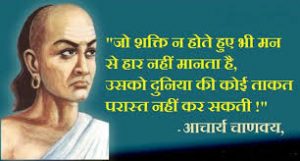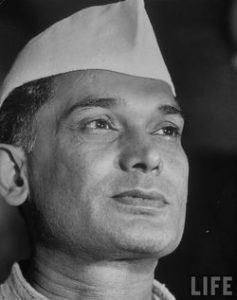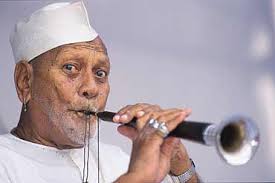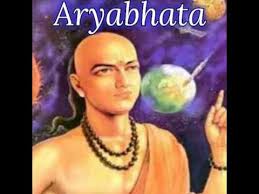Valmiki
Valmiki was the composer of the first Sanskrit poem (the Adikavya) known the world over as the epic Ramayana (Story of Lord Rama), hence he is called the Adikavi or First Poet – the Poet of Poets of India. He was born along the banks of the Ganges in ancient India to a sage by the name of Prachetasa. His birth name was Ratnakara. He apparently got lost in the jungles as a child and was found by a hunter who raised him as his own son. When he grew up he became a hunter like his foster father but also took to being a bandit to supplement his livelihood. Once it so happened he met the Maharishi Narada and tried to rob him. However Narada convinced him of the evil of his ways and converted him into a ‘Brahmarishi’ or religious scholar. He narrated the story of Rama (Ramayana) to him and asked him to write it down for posterity. Ratnakara did penance for many years and an ant-hill grew around him. Hence his new name ‘Valmika’ which in Sanskrit means an ant-hill. He came out of the anthill and penned the great epic sometime between the 4th and the 2nd century BC. “As long as there are rivers and Mountains in the world, people will read the Ramayana.”
Dr. Rajendra Prasad
Dr. Rajendra Prasad was the first President of independent India. He was the President of the Constituent Assembly that drafted the Constitution. He had also served as a Cabinet Minister briefly in the first Government of independent India. Dr. Rajendra Prasad was one of the foremost disciples of Gandhiji and he played a crucial role in Indian freedom struggle.
Dr. Rajendra Prasad, son of Mahadev Sahai, was born in Zeradei, Bihar on December 3, 1884. Being the youngest in a large joint family “Rajen” was greatly loved. He was strongly attached to his mother and elder brother Mahendra. In Zeradei’s diverse Population, people lived together in considerable harmony. Rajendra Prasad’s earliest memories were of playing “kabaddi” with his Hindu and Muslim friends alike. In keeping with the old customs of his village and family, Rajen was married when he was barely 12 years old to Rajvanshi Devi.
Dr. Rajendra Prasad was a brilliant student. He stood first in the entrance examination to the University of Calcutta, and was awarded a monthly scholarship of Rs.30. He joined the famous Calcutta Presidency College in 1902.
Having made his choice, however, he set aside the intruding thoughts, and focused on his studies with renewed vigor. In 1915, Rajen passed the Masters in Law examination with honors, winning a gold medal. Subsequently, he completed his Doctorate in Law as well.
In July 1946, when the Constituent Assembly was established to frame the Constitution of India, Dr. Rajendra Prasad was elected its President. Two and a half years after independence, on January 26, 1950, the Constitution of independent India was ratified and Dr. Rajendra Prasad was elected the nation’s first President. Dr. Prasad transformed the imperial splendor of Rashtrapati Bhavan into an elegant “Indian” home. Dr. Prasad visited many countries on missions of goodwill, as the new state sought to establish and nourish new relationships. He stressed the need for peace in a nuclear age.
In 1962, after 12 years as President, Dr. Prasad retired, and was subsequently awarded the Bharat Ratna, the nation’s highest civilian award. With the many tumults of his vigorous and accomplished life, Dr. Prasad recorded his life and the decades before independence in many books, among the more noted of which are “Satyagraha at Champaran” (1922), “India Divided” (1946), his autobiography “Atmakatha” (1946), “Mahatma Gandhi and Bihar, Some Reminisences” (1949), and “Bapu ke Kadmon Mein” (1954).
Chanakya
Chanakya, a magnificent persona, was full of determination in accomplishing any objective. This expert economist and a statesman par excellence was also well versed in all `Shastras` or branches of knowledge. Chanakya was very full-grown master in the four methods – of Persuasion, enticement, sowing dissension, and punishment or war. For anybody it was hard to makeup what was going on his mind. He was so tightlipped in his method and far-sighted that in any venture, his calculations never went wrong in order to reach his aim.
Chanakya, also known as Kautilya or Vishnugupta, was born in Pataliputra, Magadh (modern Bihar), and later moved to Taxila, in Gandhar province(now in Pakistan). He was a professor (acharya) of political science at the Takshashila University and later the Prime Minister of the Emperor Chandragupta Maurya. He is regarded as one of the earliest known political thinkers, economists and king-makers. He was the man to envision the first Indian empire by unification of the then numerous kingdoms in the Indian sub-continent and provide the impetus for fights against the Greek conqueror Alexander.
He compiled his political ideas into the ‘Arthashastra’, one of the world’s earliest treatises on political thought and social order. His ideas remain popular to this day in India. In Jawaharlal Nehru‘s Discovery of India, Chanakya has been called the Indian Machiavelli. Three books are attributed to Chanakya: Arthashastra, Nitishastra and Chanakya Niti. Arthashastra (literally ‘the Science of Material Gain’ in Sanskrit) is arguably the first systematic book on economics. It discusses monetary and fiscal policies, welfare, international relations, and war strategies in details. Many of his nitis or policies have been compiled under the book title Chanakya Niti. Nitishastra is a treatise on the ideal way of life, and shows Chanakya’s in depth study of the Indian way of life.
Aryabhatta
Aryabhatta (476-550 A.D.) was born in Patliputra in Magadha, modern Patna in Bihar. Many are of the view that he was born in the south of India especially Kerala and lived in Magadha at the time of the Gupta rulers; time which is known as the golden age of India. There is no evidence that he was born outside Patliputra and traveled to Magadha, the centre of Education and Learning for his studies where he even set up a coaching centre. His first name “Arya” is hardly a south Indian name while “Bhatt” (or Bhatta) is a typical north Indian name even found today specially among the great “Bania” (or trader) community of Bihar.
Whatever this origin, it cannot be argued that he lived in Patliputra where he wrote his famous treatise the “Aryabhatta-siddhanta” but more famously the “Aryabhatiya”, the only work to have survived. It contains mathematical and astronomical theories that have been revealed to be quite accurate in modern mathematics. For instance he wrote that if 4 is added to 100 and then multiplied by 8 then added to 62,000 then divided by 20,000 the answer will be equal to the circumference of a circle of diameter twenty thousand. This calculates to 3.1416 close to the actual value Pi (3.14159). But his greatest contribution has to be zero. His other works include algebra, arithmetic, trigonometry, quadratic equations and the sine table.
He already knew that the earth spins on its axis, the earth moves round the sun and the moon rotates round the earth. He talks about the position of the planets in relation to its movement around the sun. He refers to the Light of the planets and the moon as reflection from the sun. He goes as far as to explain the eclipse of the moon and the sun, day and night, the contours of the earth, the length of the year exactly as 365 days.
He even computed the circumference of the earth as 24835 miles which is close to modern day calculation of 24900 miles.
This remarkable Bihari was a genius and continues to baffle many mathematicians of today. His works was then later adopted by the Greeks and then the Arabs.
Jayaprakash Narayan
Jayaprakash Narayan, also spelled Jai Prakash Narain, also called Jaya Prakash Narayan, (born October 11, 1902, Sitab Diyara, India—died October 8, 1979, Patna), Indian political leader and theorist.
Narayan was educated at universities in the United States, where he became a Marxist. Upon his return to India in 1929, he joined the Indian National Congress (Congress Party). In 1932 he was sentenced to a year’s imprisonment for his participation in the civil disobedience movement against British rule in India. Upon release he took a leading part in the formation of the Congress Socialist Party, a Left-Wing group within the Congress Party, the organization that led the campaign for Indian independence. He was 
In 1948 he, together with most of the Congress Socialists, left the Congress Party and in 1952 formed the Praja Socialist Party. Soon becoming dissatisfied with party politics, he announced in 1954 that he would thenceforth devote his life exclusively to the Bhoodan Yajna Movement, founded by Vinoba Bhave, which demanded that land be distributed among the landless. His continuing interest in political problems, however, was revealed when in 1959 he argued for a “reconstruction of Indian Polity” by means of a four-tier hierarchy of village, district, state, and union councils.
In 1974 Narayan suddenly burst on the Indian political scene as a severe critic of what he saw as the corrupt and increasingly undemocratic government of Prime Minister Indira Gandhi. Although he gained a following from students and opposition politicians, there was less enthusiasm from the masses. The next year a lower court convicted Gandhi of corrupt election practices, and Narayan called for her resignation. Instead, she declared a national emergency and jailed Narayan and other opposition leaders. In prison his Health broke down. He was released after five months but never regained his health. When Gandhi and her party were defeated in Elections in 1977, Narayan advised the victorious Janata party in its choice of leaders to head the new administration.
Bismillah Khan
Bismillah Khan, Indian musician (born March 21, 1916, Bihar, India—died Aug. 21, 2006, Varanasi, Uttar Pradesh, India), played an often-scorned woodwind instrument, the shehnai, an oboelike North Indian horn, with such expressive virtuosity that he became a leading Indian classical music artist. Born into a 
Ramdhari Singh Dinkar
Ramdhari Singh ‘Dinkar’ (23 September 1908 – 24 April 1974) was an Indian Hindi poet, essayist, patriot and academic, who is considered as one of the most important modern Hindi poets. He remerged as a poet of rebellion as a consequence of his nationalist poetry written in the days before Indian independence. His poetry exuded veer rasa, and he has been hailed as a Rashtrakavi(“National poet”) on account of his inspiring patriotic compositions. He was a regular poet of Hindi Kavi sammelan on those days and is hailed to be as popular and connected to poetry lovers for Hindi speakers as Pushkin for Russians.
Dinkar initially supported the revolutionary movement during the Indian independence struggle, but later became a Gandhian. However, he used to call himself a ‘Bad Gandhian’ because he supported the feelings of indignation and revenge among the youth.[5] In Kurukshetra, he accepted that war is destructive but argued that it is necessary for the protection of freedom. He was close to prominent nationalists of the time such as Rajendra Prasad, Anugrah Narayan Sinha, Sri Krishna Sinha, Rambriksh Benipuri and Braj Kishore Prasad.
Dinkar was elected three times to the Rajya Sabha, and he was the member of this house from 3 April 1952 to 26 January 1964, and was awarded the Padma Bhushan in 1959. He was also the Vice-Chancellor of Bhagalpur University (Bhagalpur, Bihar) in the early 1960s.
During The Emergency, Jayaprakash Narayan had attracted a gathering of one lakh people at the Ramlila grounds and recited Dinkar’s famous poem: Singhasan Khaali Karo Ke Janata Aaati Hai
Ashok Kumar
Ashok Kumar, (Kumadlal Kunjilal Ganguly), Indian actor (born Oct. 13, 1911, Bhagalpur, Bihar, India—died Dec. 10, 2001, Mumbai [Bombay], India), became one of the most popular, best-loved, and longest-lasting stars of India’s “Bollywood” motion picture Industry in a career that spanned more than 60 years and some 300 films. He had a natural style of acting that allowed him to be effective and believable in a variety of characters that included both romantic leading men and roguish antiheroes, and he set a style—especially for cigarette smoking—that was copied by young men all across the country. Kumar studied law but was more interested in the direction and technical aspects of film. He was hired (1934) as a laboratory technician trainee and camera assistant at Bombay Talkies, but in 1936, when a replacement was needed for the star of Jeevan naya (“New Life”), Kumar was tapped for the role. That same year his next film, Achhut kanya (“Untouchable Girl”), made him a star. Among his most notable and most successful films—and one that brought him even greater fame—was Kismet (“Fate”; 1943), in which he portrayed a lovable pickpocket and made criminal behaviour appear glamorous. It set box-office longevity records that held for some three decades. Among later films were Jewel Thief (1967) and two for which his performances won him the Filmfare Award, India’s equivalent of the Academy Award, for best actor: Raakhi (“Filial Bond”; 1962) and Ashirwad(“Blessings”; 1968). Kumar was also honoured with India’s highest cinema prize, the Dada Saheb Phalke Award (1989), and the Filmfare Lifetime Achievement Award (1996).
,
Bihar is a state in eastern India. It is the third-most populous state in India, with over 100 million inhabitants. The state is known for its rich history and culture. It is also home to a number of famous personalities, including politicians, sportspersons, and artists.
Politicians
Lalu Prasad Yadav is an Indian politician who served as the 11th Chief Minister of Bihar from 1990 to 1997 and again from 1999 to 2005. He is the founder and president of the Rashtriya Janata Dal (RJD) political party. Yadav is a controversial figure, but he is also one of the most popular politicians in Bihar. He is known for his populist policies and his strong support for the poor.
Nitish Kumar is an Indian politician who is the 20th and current Chief Minister of Bihar. He is the president of the Janata Dal (United) (JDU) political party. Kumar is a former railway minister and a member of the Indian National Congress (INC) political party. He is known for his clean image and his focus on development.
Jagannath Mishra was an Indian politician who served as the 10th Chief Minister of Bihar from 1977 to 1979 and again from 1980 to 1985. He was a member of the Indian National Congress (INC) political party. Mishra is a controversial figure, but he is also one of the most experienced politicians in Bihar. He is known for his strong ties to the Congress party and his ability to get things done.
Sportspersons
Virender Sehwag is an Indian former cricketer who played all formats of the game. He is the only player to have scored three triple centuries in test cricket. Sehwag was a right-handed opening batsman and occasional right-arm off break bowler. He is considered one of the greatest batsmen of all time.
Sachin Tendulkar is an Indian former international cricketer who served as captain of the Indian national team. He is widely regarded as one of the greatest batsmen in the history of cricket. Tendulkar is the leading run-scorer of all time in international cricket, with 34,357 runs in 664 international matches. He is also the leading scorer of centuries in international cricket, with 100 centuries.
MS Dhoni is an Indian former international cricketer who served as captain of the Indian national team. He is widely regarded as one of the greatest captains in the history of cricket. Dhoni is the only player to have won all three ICC trophies: the Cricket World Cup, the ICC Champions Trophy, and the ICC T20 World Cup. He is also the only player to have captained India to victory in all three formats of the game.
Artists
Bihar is home to a number of famous artists, including painters, sculptors, and musicians. Some of the most famous artists from Bihar include:
- M. F. Husain was an Indian painter who is considered one of the greatest Indian artists of all time. He is known for his bold and colorful paintings, which often depict Indian culture and mythology.
- Satish Gujral was an Indian painter who is known for his abstract paintings. He is also known for his murals, which can be found in many public buildings in India.
- Krishna Chandra Pal was an Indian painter who is known for his landscapes. He is also known for his portraits, which often depict Indian people and culture.
- Benode Behari Mukherjee was an Indian painter who is known for his work in the Bengal School of Art. He is known for his paintings of nature and his use of traditional Indian techniques.
- Ramkinkar Baij was an Indian sculptor who is known for his work in the Modern Indian Sculpture movement. He is known for his sculptures of Indian people and culture.
- Ustad Bismillah Khan was an Indian musician who is considered one of the greatest Indian classical musicians of all time. He is known for his mastery of the shehnai, a traditional Indian wind instrument.
- Pandit Ravi Shankar was an Indian musician who is considered one of the greatest Indian classical musicians of all time. He is known for his mastery of the sitar, a traditional Indian string instrument.
- Ali Akbar Khan was an Indian musician who is considered one of the greatest Indian classical musicians of all time. He is known for his mastery of the sarod, a traditional Indian string instrument.
Bihar is a state with a rich history and culture. It is home to a number of famous personalities, including politicians, sportspersons, and artists. These personalities have made significant contributions to the state and to the country.
Here are some frequently asked questions and short answers about famous personalities from Bihar:
- Who is the most famous person from Bihar?
The most famous person from Bihar is probably Jayaprakash Narayan, also known as JP. He was a freedom fighter, socialist leader, and social reformer who played a major role in the Indian independence movement. He is also known for his role in the Emergency of 1975-77, when he led a nationwide movement against the authoritarian rule of Indira Gandhi.
- Who are some other famous people from Bihar?
Some other famous people from Bihar include:
- Bihari Lal (1628-1675), a Mughal general who conquered much of northern India.
- Guru Gobind Singh (1666-1708), the tenth Sikh guru.
- Raja Rammohan Roy (1772-1833), a social reformer and religious leader who is considered the father of modern India.
- Iswar Chandra Vidyasagar (1820-1891), a Bengali polymath who is considered one of the greatest educators and reformers in Indian history.
- Satyendra Nath Bose (1894-1974), a physicist who co-developed Bose-Einstein statistics and Bose-Einstein condensates.
- Jagadish Chandra Bose (1858-1937), a physicist and botanist who is considered the father of modern Indian science.
- Pandit Madan Mohan Malaviya (1861-1946), a Hindu nationalist and educationist who founded the Banaras Hindu University.
- Subhas Chandra Bose (1897-1945), a freedom fighter who is also known as Netaji. He was the founder of the Indian National Army, which fought against the British in World War II.
- Rajiv Gandhi (1944-1991), the sixth prime minister of India. He was the son of Indira Gandhi and the grandson of Jawaharlal Nehru.
- Lalu Prasad Yadav (born 1949), a politician who served as the chief minister of Bihar from 1990 to 1997 and again from 2005 to 2010. He is the founder of the Rashtriya Janata Dal party.
- Nitish Kumar (born 1951), a politician who has served as the chief minister of Bihar since 2005. He is the founder of the Janata Dal (United) party.
- Meira Kumar (1945-2017), a politician who served as the 13th Speaker of the Lok Sabha, the lower house of the Indian Parliament. She was the first woman to hold the position.
- Sharad Pawar (born 1940), a politician who has served as the chief minister of Maharashtra and the president of the Nationalist Congress Party.
- Shivraj Singh Chouhan (born 1959), a politician who has served as the chief minister of Madhya Pradesh since 2005. He is a member of the Bharatiya Janata Party.
- Vijay Rupani (born 1952), a politician who served as the chief minister of Gujarat from 2016 to 2021. He was a member of the Bharatiya Janata Party.
- Devendra Fadnavis (born 1970), a politician who served as the chief minister of Maharashtra from 2014 to 2019. He is a member of the Bharatiya Janata Party.
- Uddhav Thackeray (born 1960), a politician who has served as the chief minister of Maharashtra since 2019. He is the son of Bal Thackeray, the founder of the Shiv Sena party.
These are just a few of the many famous people from Bihar. The state has a rich history and culture, and has produced many notable individuals in a variety of fields.
1. Who is the current Chief Minister of Bihar?
(A) Nitish Kumar
(B) Lalu Prasad Yadav
(C) Tejashwi Yadav
(D) Sushil Kumar Modi
2. Which of the following is not a famous Personality from Bihar?
(A) Jayaprakash Narayan
(B) Rajendra Prasad
(C) Indira Gandhi
(D) APJ Abdul Kalam
3. Which of the following is the capital of Bihar?
(A) Patna
(B) Ranchi
(C) Gaya
(D) Muzaffarpur
4. Which of the following is the national language of Bihar?
(A) Hindi
(B) English
(C) Urdu
(D) Bengali
5. Which of the following is the main religion of Bihar?
(A) Hinduism-2/”>Hinduism
(B) Islam
(C) Christianity
(D) Sikhism
6. Which of the following is the main crop of Bihar?
(A) Rice
(B) Wheat
(C) Sugarcane
(D) Maize
7. Which of the following is the main river of Bihar?
(A) Ganges
(B) Yamuna
(C) Brahmaputra
(D) Narmada
8. Which of the following is the main tourist attraction of Bihar?
(A) Mahabodhi Temple
(B) Nalanda University
(C) Rajgir
(D) Patna Sahib
9. Which of the following is the main export of Bihar?
(A) agriculture products
(B) Handicrafts
(C) Minerals
(D) Gems and jewelry
10. Which of the following is the main import of Bihar?
(A) Machinery
(B) Petroleum products
(C) Chemicals
(D) Iron and steel
